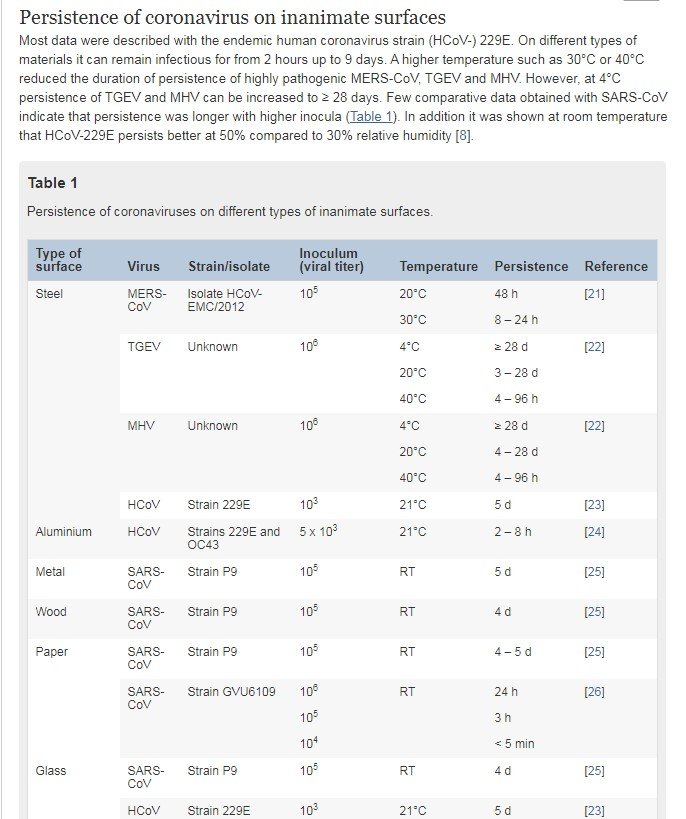Source from Kelvin A. Power’s Facebook on February 15, 2020
(Human Coronavirus)နဲ့ပါတ်သက်ပြီးလူတချို့က(H-COV)ဟာလူ့ခန္ဓာကိုယ်အပြင်ဖက်မှာအကြာကြီးအသက်မရှင်သန်နိုင်ဘူးလို့(Facebook)တွေမှာရေးသားဖြန့်ဝေနေကြတာဖတ်လိုက်ရလို့၊အဲဒါဟုတ်မှန်ပါသလားဆရာဆိုပြီး၊ကျွန်တော့်ကိုလာမေးကြပါတယ်။
–
အားလုံးကိုအထူးသတိပေးချင်တာကတော့၊ဒီအချိန်မှာ(Wuhan COVID-19)ကူးစက်ရောဂါဗိုင်းရပ်နဲ့ပါတ်သက်လို့သုတေသအထောက်အထားမခိုင်မာတဲ့သတင်းမှားတွေကိုမယုံကြည်ကြဖို့၊သတင်းမှားတွေကိုရေးသားဖြန့်ဝေနေတဲ့လူတွေကိုအထူးသတိထားကြဖို့လိုအပ်ပါတယ်။
–
တရုတ်ပြည်ကဆရာဝန်တစ်ယောက်ကဟိုလို၊ဒီလိုပြောပါတယ်ဆိုတိုင်းလဲမယုံကြည်ကြပါနှင့်။ကမ္ဘာပေါ်မှာပြည်ကြီးတရုတ်တွေဆိုတာသူများဒုက္ခရောက်အောင်လုပ်တဲ့အကျင့်ဆိုးတွေရှိတတ်ကြပါတယ်။ပြည်ကြီးတရုတ်တွေကိုပြောတာပါ၊မြန်မာပြည်ဖွား၊မြန်မာစိတ်ထားကြတဲ့တရုတ်လူမျိုးညီအကိုတွေကိုလုံးဝမဆိုလိုပါ။
–
တချို့လူတွေက(Corona Virus)တွေဟာလူ့ခန္ဓာကိုယ်ပြင်ပအရာဝတ္တုတွေပေါ်မှာအသက်မရှင်နိုင်ဘူးဆိုပြီးသတင်းမှားတွေလိုက်ဖြန့်ဝေနေတာဟာဘာမှခိုင်မာတဲ့သုတေသနအထောက်အထားတွေမရှိပဲမြန်မာလိုဘာသာပြန်ပြီးရမ်းရေးနေတဲ့(Facebook)ကစာတွေဖြစ်ပါတယ်။သေသေချာချာတိတိကျကျသိနိုင်ဖို့အတွက်၊ကိုယ်တိုင်သုတေသနအထောက်အထားတွေကိုအင်္ဂလိပ်လိုရှာပြီးတိုက်ရိုက်ဖတ်ရူလေ့လာကြစေချင်ပါတယ်။
–
ဒီ(Virus)ကိုသေသေချာချာစနစ်တကျ၊ခေတ်မှီစမ်းသပ်မှု့တွေနဲ့လေ့လာထားတဲ့သုတေသနစာတန်းတစ်စောင်ကဒီဗိုင်းရပ်(စ်)ဟာပြင်ပသက်မဲ့ပစ္စည်းတစ်ခုခုအပေါ်မှာဘယ်လောက်ကြာအောင်အသက်ရှင်သန်နေထိုင်နိုင်သလဲဆိုတာတိတိကျကျ၊ပြတ်ပြတ်သားသား၊သုတေသနလုပ်ပြီးရေးသားဖေါ်ပြထားတာတွေရှိနေပါတယ်။
–
ဒီ(Virus)လူ့ခန္ဓာကိုယ်ပြင်ပမှအသက်မရှင်သန်နိုင်ဘူးဆိုပြီးမြန်မာတွေပေါက်ကရရေးနေတာဟာအထောက်အထားသုတေသနမရှိပဲမိမိတို့ထင်ရာမြင်ရာရမ်းရေးနေတာ၊လိမ်ညာနေတာဖြစ်လို့လုံးဝ(လုံးဝ)မှားပါတယ်။မပေါ့ဆကြပါနှင့်။
–
ခိုင်မာတဲ့သုတေသနစာတမ်းတစ်ခုအရ၊ဒီဗိုင်းရပ်(စ်)ပိုးတွေဟာအပြင်မှာရှိတဲ့သက်မဲ့အရာဝတ္တုတစ်ခုခုရဲ့မျက်နာပြင်ပေါ်မှာဘယ်လောက်ကြာကြာအသက်ရှင်သန်နိုင်သလဲဆိုတာဟာ၊အဲဒီမျက်နှာပြင်ဝတ္တုပစ္စည်းအမျိုးအစား၊ပါတ်ဝန်းကျင်စိုထိုင်းမှု့နှင့် ပါတ်ဝန်းကျင်အပူချိန်တွေအေပေါ်မှာသွားပြီးမူတည်နေပါတယ်။
–
ဒါကြောင့်ဘုမသိဘမသိ၊သုတေသနအထောက်အထားဘာမှခိုင်ခိုင်မာမာမရှိပဲနဲ့(Facebook)မှာရေးနေတဲ့စာတွေကိုမယုံကြည်ကြဖို့၊ဆေးပညာရှင်တွေသုတေသနအထောက်အထားခိုင်ခိုင်မာမာနဲ့ပြောတော့မှယုံကြည်ကြပါလို့ထပ်ပြီးပြောကြားလိုပါတယ်။
–
References:
A novel coronavirus (2019-nCoV) has recently emerged from China with a total of……………….အသေးစိတ်သိချင်ရင်အပေါ်မှာပေးထားတဲ့လင့်ခ်မှာအင်္ဂလိပ်လိုဆက်ဖတ်ပါ။
–
A Medline search has been done on January 28, 2020. The following terms were used, always in combination with “coronavirus”…………………. အသေးစိတ်သိချင်ရင်အပေါ်မှာပေးထားတဲ့လင့်ခ်မှာအင်္ဂလိပ်လိုဆက်ဖတ်ပါ။
–
Persistence of coronavirus on inanimate surfaces.
Most data were described with the endemic human coronavirus strain (HCoV-) 229E. On different types of materials, it can remain infectious for 2 hours up to 9 days. A higher temperature such as 30°C or 40°C reduced the duration of persistence of highly pathogenic MERS-CoV, TGEV and MHV. However, at 4°C persistence of TGEV and MHV can be increased to ≥ 28 days. Few comparative data obtained with SARS-CoV indicate that persistence was longer with higher inocula (Table 1). In addition, it was shown at room temperature that HCoV-229E persists better at 50% compared to 30% relative humidity ——–
–
တိကျသေချာပြီး၊ယုံကြည်စိတ်ချရတဲ့သုတေသနတစ်ခုက(January 28, 2020)ရက်နေ့မှာ(Human Coronavirus)တွေပြင်ပမှာဘယ်လောက်အသက်ရှင်သန်နေထိုင်နိုင်တယ်ဆိုတာကိုသေချာသုတေသနလုပ်ထားပြီးပါပြီ။သုတေသနရဲ့ဖေါ်ပြချက်အရဆိုရင်—–
—
*****( Human coronavirus HCoV) ဟာလူ့ခန္ဓာကိုယ်အပြင်ဖက်ဝတ္တုပစ္စည်းတစ်ခုခု၏မျက်နာပြင်အပေါ်မှာ၊ထိုဝတ္တုပစ္စည်းအမျိုးအစားနှင့်ပါတ်ဝန်းကျင်အပူချိန်အပေါ်မှာမူတည်ပြီးအချိန်အတိုဆုံးအလူမီနီယမ်မျက်နှာပြင်အပေါ်မှာ(၂)နာရီကနေ၊အချိန်အရှည်ဆုံးပလတ်စတစ်မျက်နာပြင်အပေါ်မှာ(၉)ရက်အထိ၊အခန်းအပူချိန်မှာအသက်ရှင်သန်နေနိုင်တယ်ဆိုတာသုတေသနအထောက်အထားတွေအခိုင်အမာရှိနေပါတယ်။)******
–
In addition, it was shown at room temperature that HCoV-229E persists better at 50% compared to 30% relative humidity)ပါတ်ဝန်းကျင်စိုထိုင်းမှု့(humidity)အပေါ်မှာလဲမူတည်နေပါတယ်။ဆိုလိုတာကစိုထိုင်းမှု့များရင်များသလိုပိုပြီးကြာကြာအသက်ရှင်သန်နေထိုင်နေနိုင်ပါတယ်။
—
အသေးစိတ်တိတိကျကျပြောရရင်၊Human Coronavirus (H-COV)ဟာ
–
အလူမီနီယမ်(Aluminium)မျက်နာပြင်ပေါ်မှာ၊အပူချိန်(21 ံC)မှာဆိုရင်အနည်းဆုံး(၂)နာရီကနေ၊အများဆုံး(၈)နာရီအထိပဲအသက်ရှင်သန်နေထိုင်နိုင်ပါတယ်။
–
စတီး(Steel)မျက်နာပြင်ပေါ်မှာ၊အပူချိန်(21 ံC)မှာဆိုရင်အများဆုံး(၅)ရက်အထိအသက်ရှင်နေနိုင်ပါတယ်။
–
အလူမီနီယမ်ကလွဲပြီး၊တခြားသတ္တု(Metal)အများစုတွေရဲ့မျက်နာပြင်ပေါ်မှာ၊(အခန်းအပူချိန်)မှာဆိုရင်လဲ(၅)ရက်အထိအသက်ရှင်နေနိုင်ပါတယ်။
–
သစ်သား(wood)မျက်နာပြင်ပေါ်မှာ၊အပူချိန်(အခန်းအပူချိန်)မှာဆိုရင်အများဆုံး(၄)ရက်အထိအသက်ရှင်နေနိုင်ပါတယ်။
–
စက္ကူ(Paper)မျက်နာပြင်ပေါ်မှာ၊အပူချိန်(အခန်းအပူချိန်)မှာဆိုရင်အများဆုံး(၅)ရက်အထိအသက်ရှင်နေနိုင်ပါတယ်။
–
ဖန်သား(Glass)မျက်နာပြင်ပေါ်မှာ၊အပူချိန်(အခန်းအပူချိန်)မှာဆိုရင်အများဆုံး(၄)ရက်အထိအသက်ရှင်နေနိုင်ပါတယ်။
–
ပလတ်စတစ်Plastic)မျက်နာပြင်ပေါ်မှာ၊အပူချိန်(အခန်းအပူချိန်)မှာဆိုရင်အများဆုံး(၉)ရက်အထိအသက်ရှင်နေနိုင်ပါတယ်။
–
(PVC)အမျိုးအစားပလတ်စတစ်မျက်နာပြင်ပေါ်မှာ၊အပူချိန်(21 ံC)မှာဆိုရင်အများဆုံး(၅)ရက်အထိအသက်ရှင်နေနိုင်ပါတယ်။
–
ဆီလီကွန်သားရေ(Silicon rubber)မျက်နာပြင်ပေါ်မှာ၊အပူချိန်(21 ံC)မှာဆိုရင်အများဆုံး(၅)ရက်အထိအသက်ရှင်နေနိုင်ပါတယ်။
–
ခွဲစိတ်ခန်းသုံးရာဘာလက်အိပ်(latex surgical glove) မျက်နာပြင်ပေါ်မှာ၊အပူချိန်(21 ံC)မှာဆိုရင်အများဆုံး(၈)နာရီအထိပဲအထိအသက်ရှင်နေနိုင်ပါတယ်။
–
တစ်ခါသုံးခွဲစိတ်ခန်းသုံးဝတ်စုံ(Disposable gown) မျက်နှာပြင်ပေါ်မှာ၊အပူချိန်(အခန်းအပူချိန်)မှာဆိုရင်အများဆုံး(၂)ရက်အထိပဲအသက်ရှင်နေနိုင်ပါတယ်။
–
ကြွေရည်၊စဉ့်ရေသုတ်ပစ္စည်း(Ceramic)မျက်နှာပြင်ပေါ်မှာ၊အပူချိန်(21 ံC)မှာဆိုရင်အများဆုံး(၅)ရက်အထိအသက်ရှင်နေနိုင်ပါတယ်။
–
တယ်ဖလွန်သား(Teflon) မျက်နှာပြင်ပေါ်မှာ၊အပူချိန်(21 ံC)မှာဆိုရင်အများဆုံး(၅)ရက်အထိအသက်ရှင်နေနိုင်ပါတယ်။
–
အလူမီနီယမ်(Aluminium)မျက်နှာပြင်ပေါ်မှာခဏပဲအသက်ရှင်နိုင်တယ်ဆိုတာကအလွန်အံသြစရာကောင်းပါတယ်။ဒါကြောင့်မို့၊ဗိုင်းရပ်စ်ကာကွယ်ဆေးတွေမှာ၊အလူမီနီယမ်၊မာကျူရီ၊ခဲအစရှိတဲ့(Metals)တွေပါဝင်ထည့်သွင်းထားတာတွေကိုတွေ့ရပါတယ်။ဒါကြောင့်တချို့ကာကွယ်ဆေးတွေမှာပါဝင်နေတဲ့(Heavy Metal)တွေဟာဦးနှောက်နှင့်အာရုံကြောကိုထိခိုက်ပျက်စီးစေနိုင်ပါတယ်။
Reference:
–
ဒီပိုးကိုခန္ဓာကိုယ်ပြင်ပမျက်နှာပြင်တစ်ခုမှာ၊ပိုးအသတ်နိုင်ဆုံးပိုးသတ်ဆေးအရည်တွေကတော့၊အီသနော(Ethanol)အရက်အမျိုးအစားနှင့်၊လူတွေနေ့စဉ်သုံးနေတဲ့အရက်ပျံ(Isopropyl alcohol or 2-propanol)တို့ဖြစ်ကြပါတယ်။ အီသနောအရည်၊ပျင်းအား(85%)နှင့်အထက်ပက်ဖျန်းပေးပြီးစက္ကန့်(၃၀)အကြာမှာတင်ပိုးအရေအတွက်[log10(5.5)] ရာခိုင်နုန်းအားဖြင့်(75%)လောက်သေပါတယ်။အရက်ပျံပြင်းအား(75%)နှင့်ပက်ဖျန်းလိုက်ပါကစက္ကန့်(၃၀)အကြာမှာတင်ပိုးအရေအတွက်[log10(4.0)]အထိ၊ရာခိုင်နုန်းအားဖြင့်(60%)လောက်သေပါတယ်။
Reference:
–
–
ဒီနေရာမှာအရက်ပျံနှင့်ဗိုင်းရပ်စ်ထိတွေ့တဲ့အချိန်သိပ်အရေးကြီးပါတယ်။အထူးအကြံပြုချင်တာက၊(Isopropyl alcohol or 2-propanol 75%)ကိုဒီအတိုင်းပက်ဖျန်းလိုက်ရင်တစ်မိနစ်လောက်အတွင်းခြောက်ခန်းသွားနိုင်လို့အချိန်တိုတဲ့အတွက်ဗိုင်းရပ်(60%)ကနေ(80%)လောက်အထိပဲသေနိုင်ပါတယ်။တစ်ကယ်လို့အရက်ပြန်(Isopropyl alcohol)ကိုအဝတ်စ(သို့မဟုတ်)စက္ကတစ်ရှူးစတွေမှာသုပ်ပြီးမျက်နာပြင်တစ်ခုအပေါ်မှာ(၅)မိနစ်အကြာလောက်အုပ်ထားမယ်။ဒါမှမဟုတ်အကြိမ်ကြိမ်ပက်ဖျန်းပေးမယ်ဆိုရင်တော့၊အချိန်ကြာကြာတိုင်အောင်ခန်းခြောက်မသွားပဲဗိုင်းရပ်တွေကိုထိတွေ့မှုရှိနေသဖြင့်၊အရက်ပြန်နှင့်ဗိုင်းရပ်ထိတွေ့မှုအချိန်ကြာရင်ကြာသလိုဗိုင်းရပ်စ်သေနိုင်မှုရာခိုင်နုန်းလဲပိုများလာနိုင်ပါတယ်။ဒါကတော့သုတေသနထဲမှာမပါပါဘူး။အကြံပြုချက်သက်သက်ပါ။
—
အနှစ်ချုပ်ပြောချင်တာကသုတေသနအထောက်အထားမရှိပဲနဲ့ပေါက်ကရရေးထားတာတွေကိုလုံးဝ(လုံးဝ)မယုံကြပါနှင့်။ကမ္ဘာပေါ်မှာအမေရိကန်နိုင်ငံဟာအလွန်တိုးတက်ပါတယ်။ဘာကြောင့်တိုးတက်တာလဲဆိုတော့၊အမေရိကန်မှာကျောင်းတက်ဖူးတဲ့ပညာတတ်တဲ့လူတိုင်းဟာ၊ဘယ်ကိစ္စကိုမဆိုခိုင်မာတဲ့သုတေသနအထောက်အထားတွေမပါရင်လုံးဝကိုမယုံကြည်တတ်ကြပါဘူး။
–
အမေရိကန်နိုင်ငံက၊ပညာရှင်တွေအကြားမှာသုတေသနအထောက်အထားတွေမပါပဲစကားပြောတယ်ဆိုတာဟာအလွန်ရှက်စရာကောင်းတဲ့အလုပ်တစ်ခုပါ။မြန်မာလူမျိုးတွေအများစုကတော့သုတေသနမပါတဲ့အရပ်စကားမှာပဲလမ်းဆုံးနေကြတာဟာတကယ်ကိုသနားစရာကောင်းပါတယ်။ဒီစရိုက်ကိုပြုပြင်ကြဖို့လိုအပ်နေပါပြီ။
–
အထူးမှတ်ချက်။
ဘယ်သူ့ကိုမှရည်ရွယ်ပြီးအတိုက်ခံလုပ်ရေးနေတာမဟုတ်ဘူးဆိုတာကိုတော့အားလုံးနားလည်ပေးကြစေချင်ပါတယ်။။ဒီသတင်းအမှားကိုယုံကြည်မိပြီး၊ပေါ့ပေါ့ဆဆနေကြရင်ရောဂါအကူးအစက်ခံကြရပြီး၊အသက်ပေါင်းများစွာမဆုံးရံှုးရအောင်စေတနာဖြင့်၊ခိုင်မာတဲ့သုတေသနအထောက်အထားတွေကိုရှာဖွေဖေါ်ထုတ်ပြသရခြင်းဖြစ်ပါတယ်။အားလုံးဘေးကင်းကြပါစေ။
–
Kelvin Albert Power
–
References:
Other References:
WHO. Novel Coronavirus (2019-nCoV). Situation Report 9.: WHO 2020.
de Wit, E., van Doremalen, N., Falzarano, D., and Munster, V.J. SARS and MERS: recent insights into emerging coronaviruses. Nature Reviews Microbiology. 2016; 14: 523–534
View in Article | Google Scholar
Chan, J.F., Yuan, S., Kok, K.H., To, K.K., Chu, H., Yang, J. et al. A familial cluster of pneumonia associated with the 2019 novel coronavirus indicating person-to-person transmission: a study of a family cluster. Lancet. 2020; https://doi.org/10.1016/s0140-6736(20)30154-9
View in Article | Google Scholar
Otter, J.A., Donskey, C., Yezli, S., Douthwaite, S., Goldenberg, S.D., and Weber, D.J. Transmission of SARS and MERS coronaviruses and influenza virus in healthcare settings: the possible role of dry surface contamination. J Hosp Infect. 2016; 92: 235–250
View in Article | Google Scholar
Dowell, S.F., Simmerman, J.M., Erdman, D.D., Wu, J.S., Chaovavanich, A., Javadi, M. et al. Severe acute respiratory syndrome coronavirus on hospital surfaces. Clinical Infectious Diseases: An Official Publication of the Infectious Diseases Society of America. 2004; 39: 652–657
View in Article | Google Scholar
Geller, C., Varbanov, M., and Duval, R.E. Human coronaviruses: insights into environmental resistance and its influence on the development of new antiseptic strategies. Viruses. 2012; 4: 3044–3068
View in Article | Google Scholar
Kampf G. Antiseptic Stewardship: Biocide Resistance and Clinical Implications, Cham: Springer International Publishing 2018.
Ijaz, M.K., Brunner, A.H., Sattar, S.A., Nair, R.C., and Johnson-Lussenburg, C.M. Survival characteristics of airborne human coronavirus 229E. The Journal of General Virology. 1985; 66: 2743–2748
View in Article | Google Scholar
Bean, B., Moore, B.M., Sterner, B., Peterson, L.R., Gerding, D.N., and Balfour, H.H. Survival of influenza viruses on environmental surfaces. The Journal of Infectious Diseases. 1982; 146: 47–51
View in Article | Google Scholar
Ansari, S.A., Springthorpe, V.S., Sattar, S.A., Rivard, S., and Rahman, M. Potential role of hands in the spread of respiratory viral infections: studies with human parainfluenza virus 3 and rhinovirus 14. J Clin Microbiol. 1991; 29: 2115–2119
View in Article | Google Scholar
Kwok, Y.L., Gralton, J., and McLaws, M.L. Face touching: a frequent habit that has implications for hand hygiene. Am J Infect Control. 2015; 43: 112–114
View in Article | Google Scholar
WHO. Infection prevention and control during health care when novel coronavirus (nCoV) infection is suspected. Interim guidance. 25 January 2020. WHO 2020.
WHO. Annex G. Use of disinfectants: alcohol and bleach. Infection prevention and control of epidemic-and pandemic-prone acute respiratory infections in health care Geneva: WHO 2014; 65-66.
Siddharta, A., Pfaender, S., Vielle, N.J., Dijkman, R., Friesland, M., Becker, B. et al. Virucidal Activity of World Health Organization-Recommended Formulations Against Enveloped Viruses, Including Zika, Ebola, and Emerging Coronaviruses. J Infect Dis. 2017; 215: 902–906
View in Article | Google Scholar
Yen, M.Y., Lu, Y.C., Huang, P.H., Chen, C.M., Chen, Y.C., and Lin, Y.E. Quantitative evaluation of infection control models in the prevention of nosocomial transmission of SARS virus to healthcare workers: implication to nosocomial viral infection control for healthcare workers. Scandinavian Journal of Infectious Diseases. 2010; 42: 510–515
View in Article | Google Scholar
Alshammari M, Reynolds KA, Verhougstraete M, O’Rourke MK. Comparison of Perceived and Observed Hand Hygiene Compliance in Healthcare Workers in MERS-CoV Endemic Regions. Healthcare (Basel, Switzerland) 2018; 6.
Al-Tawfiq, J.A., Abdrabalnabi, R., Taher, A., Mathew, S., and Rahman, K.A. Infection control influence of Middle East respiratory syndrome coronavirus: A hospital-based analysis. Am J Infect Control. 2019; 47: 431–434
View in Article | Google Scholar
Wong, T.W. and Tam, W.W. Handwashing practice and the use of personal protective equipment among medical students after the SARS epidemic in Hong Kong. Am J Infect Control. 2005; 33: 580–586
View in Article | Google Scholar
Wiboonchutikul, S., Manosuthi, W., Likanonsakul, S., Sangsajja, C., Kongsanan, P., Nitiyanontakij, R. et al. Lack of transmission among healthcare workers in contact with a case of Middle East respiratory syndrome coronavirus infection in Thailand. Antimicrob Resist Infect Control. 2016; 5: 21
View in Article | Google Scholar
Ki, H.K., Han, S.K., Son, J.S., and Park, S.O. Risk of transmission via medical employees and the importance of routine infection-prevention policy in a nosocomial outbreak of the Middle East respiratory syndrome (MERS): a descriptive analysis from a tertiary care hospital in South Korea. BMC Pulmonary Medicine. 2019; 19: 190
View in Article | Google Scholar
van Doremalen, N., Bushmaker, T., and Munster, V.J. Stability of Middle East respiratory syndrome coronavirus (MERS-CoV) under different environmental conditions. Euro Surveill. 2013; 18
View in Article | Google Scholar
Casanova, L.M., Jeon, S., Rutala, W.A., Weber, D.J., and Sobsey, M.D. Effects of air temperature and relative humidity on coronavirus survival on surfaces. Appl Environ Microbiol. 2010; 76: 2712–2717
View in Article | Google Scholar
Warnes, S.L., Little, Z.R., and Keevil, C.W. Human Coronavirus 229E Remains Infectious on Common Touch Surface Materials. (e01697-15)mBio. 2015; 6
View in Article | Google Scholar
Sizun, J., Yu, M.W., and Talbot, P.J. Survival of human coronaviruses 229E and OC43 in suspension and after drying on surfaces: a possible source of hospital-acquired infections. Journal of Hospital Infection. 2000; 46: 55–60
View in Article | Google Scholar
Duan, S.M., Zhao, X.S., Wen, R.F., Huang, J.J., Pi, G.H., Zhang, S.X. et al. Stability of SARS coronavirus in human specimens and environment and its sensitivity to heating and UV irradiation. Biomedical and Environmental Sciences. 2003; 16: 246–255
View in Article | Google Scholar
Lai, M.Y., Cheng, P.K., and Lim, W.W. Survival of severe acute respiratory syndrome coronavirus. Clinical Infectious Diseases: An Official Publication of the Infectious Diseases Society of America. 2005; 41: e67–71
View in Article | Google Scholar
Chan, K.H., Peiris, J.S., Lam, S.Y., Poon, L.L., Yuen, K.Y., and Seto, W.H. The Effects of Temperature and Relative Humidity on the Viability of the SARS Coronavirus. Advances in Virology. 2011; 2011: 734690
View in Article | Google Scholar
Rabenau, H.F., Cinatl, J., Morgenstern, B., Bauer, G., Preiser, W., and Doerr, H.W. Stability and inactivation of SARS coronavirus. Med Microbiol Immunol. 2005; 194: 1–6
View in Article | Google Scholar
Rabenau, H.F., Kampf, G., Cinatl, J., and Doerr, H.W. Efficacy of various disinfectants against SARS coronavirus. J Hosp Infect. 2005; 61: 107–111
View in Article | Google Scholar
Saknimit, M., Inatsuki, I., Sugiyama, Y., and Yagami, K. Virucidal efficacy of Physico-chemical treatments against coronaviruses and parvoviruses of laboratory animals. Jikken Dobutsu Experimental Animals. 1988; 37: 341–345
View in Article | Google Scholar
Wood, A., and Payne, D. The action of three antiseptics/disinfectants against enveloped and non-enveloped viruses. J Hosp Infect. 1998; 38: 283–295
View in Article | Google Scholar
Pratelli, A. Action of disinfectants on canine coronavirus replication in vitro. Zoonoses and Public Health. 2007; 54: 383–386
View in Article | Google Scholar
Delano, C., Vega, Q., and Boesenberg, D. The antiviral action of common household disinfectants and antiseptics against murine hepatitis virus, a potential surrogate for SARS coronavirus. Am J Infect Control. 2009; 37: 649–652
View in Article | Google Scholar
Omidbakhsh, N. and Sattar, S.A. Broad-spectrum microbicidal activity, toxicologic assessment, and materials compatibility of a new generation of accelerated hydrogen peroxide-based environmental surface disinfectant. Am J Infect Control. 2006; 34: 251–257
View in Article | Google Scholar
Pratelli, A. Canine coronavirus inactivation with physical and chemical agents. Veterinary Journal (London, England: 1997). 2008; 177: 71–79
View in Article | Google Scholar
Kariwa, H., Fujii, N., and Takashima, I. Inactivation of SARS coronavirus by means of povidone-iodine, physical conditions and chemical reagents. Dermatology (Basel, Switzerland). 2006; 212: 119–123
View in Article | Google Scholar
Eggers, M., Eickmann, M., and Zorn, J. Rapid and Effective Virucidal Activity of Povidone-Iodine Products Against Middle East Respiratory Syndrome Coronavirus (MERS-CoV) and Modified Vaccinia Virus Ankara (MVA). Infectious Diseases and Therapy. 2015; 4: 491–501
View in Article | Google Scholar
Eggers, M., Koburger-Janssen, T., Eickmann, M., and Zorn, J. Vitro Bactericidal and Virucidal Efficacy of Povidone-Iodine Gargle/Mouthwash Against Respiratory and Oral Tract Pathogens. Infectious Diseases and Therapy. 2018; 7: 249–259
View in Article | Google Scholar
Hulkower, R.L., Casanova, L.M., Rutala, W.A., Weber, D.J., and Sobsey, M.D. Inactivation of surrogate coronaviruses on hard surfaces by health care germicides. Am J Infect Control. 2011; 39: 401–407
View in Article | Google Scholar
Sattar, S.A., Springthorpe, V.S., Karim, Y., and Loro, P. Chemical disinfection of non-porous inanimate surfaces experimentally contaminated with four human pathogenic viruses. Epidemiology and Infection. 1989; 102: 493–505
View in Article | Google Scholar
Goyal, S.M., Chander, Y., Yezli, S., and Otter, J.A. Evaluating the virucidal efficacy of hydrogen peroxide vapor. J Hosp Infect. 2014; 86: 255–259

